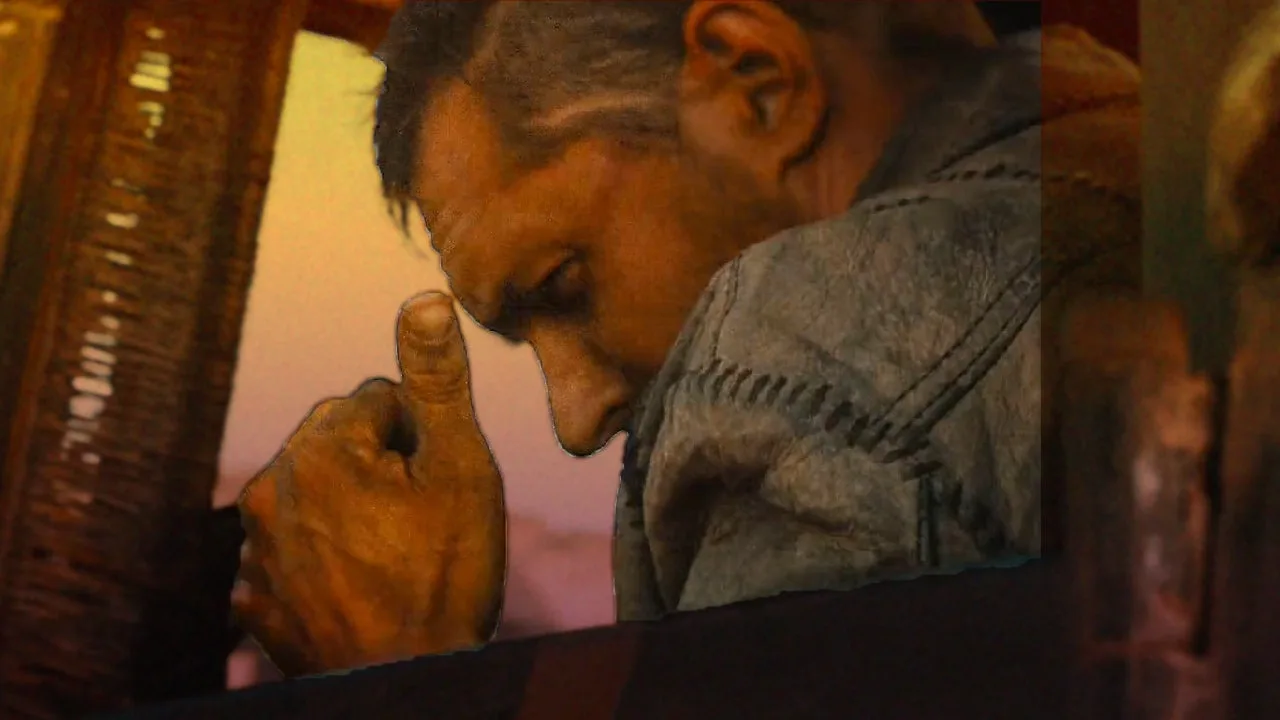Furiosa: Why the Mad Max Movies Don’t Need Mad Max Anymore
It’s a strange life in the Wasteland, where only those mobile enough to scavenge, brutal enough to pillage can survive. At one time, Mad Max was our default hero in this world. But as creator George Miller proves with Furiosa: A Mad Max Saga, there are many stories to be told in this universe that go beyond that of Max Rockatansky.
On the one hand, spinning off a popular character into her own film is nothing new in these franchise-heady days. But in the case of Mad Max, it’s much more complicated than that. Because almost from the start 45 years ago, Miller has been creating through the world of Mad Max a mythos that allows for the constant reinvention and reformatting of the series, even while continuing to explore the core concept that he first tackled with the original film back in 1979.
“We’ve been telling revenge stories in all cultures,” Miller tells IGN. “There is a kind of cultural evolution where stories are told over and over again. But somehow they have to have some sort of resonance with their times.”
So start your engines, lady and gentlemans, because we’re gonna talk about why the Mad Max movies don’t need Mad Max anymore.
While the first three Mad Max movies – 1979’s Mad Max, 1981’s Mad Max 2, a.k.a. The Road Warrior, and 1985’s Mad Max Beyond Thunderdome – all feature Mel Gibson’s iconic take on the character, there are shifts in the world-building between films, as well as echoes from one to the next, that seem to bend, if not outright break, continuity. The Mad Max universe is almost like the anti-MCU in this way – it’s enough to wake Kevin Feige up with the cold sweats in the middle of the night.
“For the first three movies, it was the same Max, but the world wasn’t coherently the same,” explains Miller.
As a result of that ever-changing world, over the years some fans began to speculate that each film was just telling a new version of the Mad Max story, sort of like soft reboots each time around. Or even riffs on a classic myth or legend, if you will.
By the time we got to Fury Road in 2015, Max had been recast with Tom Hardy in the role, and the character – let’s be frank here – was playing second fiddle to Charlize Theron’s Furiosa. Not only was Theron a bigger star than Hardy, but she had a meatier story arc as well. This is when Miller came to realize the Mad Max world could exist without Mad Max.
For the first three movies, it was the same Max, but the world wasn’t coherently the same. -George Miller
“It started with Fury Road,” remembers the director. “The first three Mad Maxes had only one thing in common, and that was Max. The character of Max. Each film was different. Each film for me was a different exercise. … But none of them were connected. Now, we are in all these years later, we’re in a different situation. In order to tell the story of Fury Road … we had to know everything about the world in which it was set.”
And so Furiosa’s back story was filled in with a screenplay and concept art all the way back when Fury Road was still being prepped. And now, all these years later, that story is finally being told.
“Every story is driven by character,” says Miller. “And this was specifically about the world of Furiosa. We had decided that if Fury Road worked… I didn’t expect it to take this long, but we decided to tell that story next.”
But the thing about Furiosa, now played by Anya Taylor-Joy, is that her story is very much a version of Max’s story. And Dementus, Chris Hemsworth’s villain in the Furiosa film, also mirrors those characters. It’s almost as if Miller is telling variations on the same legend over and over and over again.
The Mad Max Universe: An Inadvertant Dystopia
The first Mad Max movie wasn’t always meant to be set in a dystopian hellscape. No, that only came about because the production didn’t have enough money to be set in the real world. Initially, the was meant to take place in contemporary Melbourne, where it was shot.
That would’ve involved blocking off city streets, hiring extras, putting stuntmen in all the nice looking cars which would then have to do stunts on those city streets. As Miller points out, they just didn’t have the money to do a French Connection or Bullitt. “So inadvertently, it became a dystopian story,” he says.
This meant Miller could shoot on deserted streets on the outskirts of the city, old and run-down buildings could serve as locations, and essentially the crappier something looked, the better.
“The film became abstracted by being in a dystopian world,” he explains. “Inadvertently took it into, if you like, a more allegorical world. … I realized … I’m no longer obliged to make it naturalistic to the city I was living in and make it look like a contemporary drama. And freed from that, we were able to then get much more, if you like, florid or hyperbolic.”
He points to a line the first film’s villain, Toecutter, speaks: “The Night Rider… Remember him when you look at the night sky!”
“You don’t hear a bikie gang leader talking to a guy and say, ‘Remember the Night Rider when you look at the night sky,’” he laughs. “You can’t do that in a contemporary story. But you could do it in the Mad Max world.”
Even though he wasn’t yet fully aware of it, Miller had tapped into something bigger than a mere revenge B movie. With a line like the one about Night Rider, the groundwork was already being laid for the idea of these characters ascending to a place of legend.
“It was there, but it wasn’t articulated,” says Miller. “I was lucky there in order to see that. … That wasn’t accidental. It was just that that decision gave us permission to do that. And here I am today, all these years later, still exploring those notions.”
Akira WHO-osawa?
When Mad Max was released, it was a huge hit in its home country of Australia, and it was also embraced internationally. In fact, this little movie went on to become the most profitable film ever made at that time, due to its low production cost, a record that wouldn’t be broken until The Blair Witch Project came out 20 years later.
But in North America, Mad Max was not a success, no doubt hampered by a limited release and the Australian actors being dubbed by American voices. Still, that didn’t really matter because foreign audiences were picking up on something in the film.
“It became a big hit in Japan. And the truth is they said, ‘Oh, Max is a samurai,’” says Miller.
Having an international hit on your hands for your first feature film is pretty impressive, though Miller laughs now about an embarrassing incident from this period.
In Scandinavia, they said, ‘Oh, it’s a lone Viking. The French said, ‘It’s a Western on wheels.’ -George Miller
“They said, ‘You must’ve seen a lot of Kurosawa movies,’” he recalls. “And I said, to my eternal shame, ‘Who’s Kurosawa?’ I actually said that. … Still embarrassed by it. I made it my point, by the way, to see every Kurosawa movie. And it had a huge influence on my filmmaking, as it did on everyone else’s.”
But beyond learning about revered foreign directors, the international reactions to Mad Max proved to be an enlightening experience for Miller. From Spain to Scandinavia to France and beyond, the film was being interpreted in interesting ways.
“In Scandinavia, they said, ‘Oh, it’s a lone Viking,’” says Miller. “The French said, ‘It’s a Western on wheels.’ And suddenly I realized we had… It was more archetypal in the same way that the American Western, a staple of cinema from the silent era all the way through to recent times, they were allegorical stories in which you could explore the world and issues in a more elemental way.”
Miller realized he and his team had gotten lucky with Mad Max. They had keyed in on something much bigger than the story they thought they were telling. This in turn led him to the works of Joseph Campbell, the renowned professor of comparative mythology whose concept of the “hero’s journey” has been cited by George Lucas as being a big influence on Star Wars.
“He spent 40 years in a library collating all the stories of humankind across all cultures and seeing what was in common,” explains Miller. “And that influenced Road Warrior, which is much more deliberate, had more understanding as to the function of a sort of the archetype. And [Max] became a much more mythological creature.”
The Warrior of the Wasteland
“The First Mad Max is a more basic revenge tale,” says Miller. “And interesting enough, that sort of left room, I realized for me, in order to tell the story of … Mad Max 2, or Road Warrior.”
The Road Warrior expanded the world of the Wasteland as well as the scope of the production itself after the first movie. This was the film that would finally get Americans hooked on the adventures of Max Rockatansky, even if he had stopped using that last name at this point. For all intents and purposes, he was just “Max” now, and as of this film it would be increasingly rare for the characters in the Mad Max universe to even have regular or normal names: The Gyro Captain, the Feral Kid, the Warrior Woman, the Lord Humungus… even Max’s dog only went by, well, Dog. (Good boy.)
At this point, Miller and his team were consciously leaning into the mythic aspects of the world, and of Max. From the get-go, a voiceover mixed with flashbacks to the first film and real-life footage of war and horror establish an ethereal, dream-like quality for the story of Max.
“It even begins, ‘My life fades… My memory fades.’ Or whatever. ‘All I remember is the Road Warrior,’” Miller points out.
These are the memories of the Feral Kid, who will one day grow up to be the leader of a new order known as the Great Northern Tribe. But for now, he’s just a wolf boy whose life is about to be irrevocably changed because of Max. Is the story he tells us what really happened, or just how he remembers things? Has he embellished it to make it sing? Does it really matter? Whatever the case, it’s presented in the form of an oral tradition; you can practically picture the old man sitting around a fire telling the next generation about the legend of Max.
The Road Warrior has been widely compared to Shane, the Western about a lone gunfighter who protects a group of settlers from an evil cattle baron. Shane even meets a young boy who hero-worships him, though the Feral Kid packs a bit more punch than little Joey. Those comparisons are not wrong, as Miller and company are clearly evoking Western archetypes in the film. Even giving Max a dog as a sidekick scratches a certain itch in this regard.
But there are also small touches here that go far in building an internal reality for the characters and their world, contrasting what things are like now versus what they once were. Take the moment when Humungus opens his pistol case. Unlike most everything else in the Wasteland, this is a nicely kept and seemingly prized possession from a different time. Who is that in the photo? Humungus’ grandparents, perhaps? Whose medals are those? It’s no accident that Miller has placed them here, but it’s up to us to decide what they mean.
“Yeah, that was the case back then,” he says of Humungus’ pistol set. “But now today, having done Fury Road and having done Furiosa, I can tell you about … where everything came from much more accurately. … We can tell you how The Citadel was formed. I can tell you where the Doof Warrior came from, how he could survive, how he got his guitar, how Max got his car, how each of the vehicles are put together. We see that much more specifically. That world building has to be much more accurate and precise than we could in those days.”
But if the world of Mad Max had taken a great leap forward in Road Warrior, things were about to expand even beyond that film’s apocalyptic concepts. Beyond Thunderdome!
Beyond the Wasteland
In Mad Max Beyond Thunderdome, Max encounters a tribe of children, echoing the Feral Kid from the last movie. Only, these characters live in an oasis in the Wasteland, a strangely paradise-like site for this series. Even the oldest of the kids seem to barely remember life before the apocalypse, or “poxyclipse” as they call it, but they’ve maintained an oral history that conveys a warped rendition of how the world ended, and how they ended up where they are. The kids call this “The Tell,” and it involves focusing what is essentially a homemade movie screen on cave paintings, lots of audience participation, and really, genuine goosebumps if you’re willing to go with it.
“There is a kind of cultural evolution,” says Miller of storytelling like “The Tell.” “Where stories are told over and over again. But somehow they have to have some sort of resonance with their times.”
At some point between Mad Max 1 and this film, Miller’s world evolved into a full-blown post-nuclear war landscape. The director leans into the expulsion from paradise myth here as some from this tribe yearn for the forbidden fruit of the old world, leading them to the other major locale in the movie, Bartertown, which is run by Tina Turner’s ’80s-armor-clad Aunty Entity. The characters, vehicles, and setting in this realm are more alien than ever now, and when Max winds up entering into one-on-one combat in the Thunderdome itself, he is given the appropriately mythic name of The Man With No Name. Clint Eastwood would be proud.
There’s also a design transformation happening as of this film, as the vehicles and the like have begun to morph from just cool cars fitted for the end of the world into something wholly original.
“You’ll even see the design of the cars in Road Warrior, they were sort of… Weren’t found objects repurposed,” says Miller. “They were their own designs, the vehicles. I didn’t even think about the world in terms of that way back when we did Road Warrior, but by the time we did Fury Road, it had to be very, very specific. Otherwise, it would be just surface design.”
As the world around Max gets bigger, Max himself’s importance seems to decrease.
What’s funny about this series is that as the world around Max gets bigger, Max himself’s importance seems to decrease. Sure, he was integral to helping the settlers in Road Warrior, and here he saves these kids too, but Max starts to become a cypher at a certain point, a heroic figure who stands in to do what needs to be done while the more interesting characters get to move on with their lives by the end of each film, even while he must wander back out into the Wasteland, doomed to repeat his heroic feats over and over again. This reaches its extreme in Fury Road, and now of course, Furiosa, where he’s seemingly been replaced entirely by the Taylor-Joy character.
Shiny and Chrome
While only six years passed between Mad Max and Beyond Thunderdome, it would be another 30 years before Fury Road was released. And in that time, and during the film’s tortured development process, Miller fine-tuned the Mad Max universe once again, switching much of his focus to Furiosa, another revenge-minded character. Which, as he points out, has long been a strong motivating factor in the world’s mythologies and religions.
“We’ve been telling revenge stories in all cultures, and specifically with Greek mythologies and mainly biblical stories, all the Abrahamic religions,” he says. “Particularly Old Testament. It’s big in that world, in all mythology. So how do you tell a variation of it?”
For one thing, the world of Mad Max has a religion, or cult if you will, built directly into it now. This is the cult of Immortan Joe, which apparently is also known as the Cult of the V8, even though that term is never actually used onscreen. In the film, we mostly see the War Boys worship in this way, apparently finding divinity in the powerful V8 engine, which after all, can be the difference between life and death in this world. And, really, this isn’t too far a leap from how Max’s V8 Interceptor is treated in the first two films, where we hear talk of the “last of the V8 Interceptors.”
Immortan Joe’s god-like promise of an afterlife in Valhalla for the War Boys, their intonations of “witness me” as they make their suicidal runs, and the War Boy Nux’s pledge to “die historic on the Fury Road” are all manifestations of this religion. Even Joe’s disappointment in Nux feels like that of a disapproving priest passing withering judgment on a sinner.
Beyond these freaks, who are actually kind of endearing in their devotion, there’s the Many Mothers tribe from which Furiosa came. Their communal gestures and signage feel like the manifestation of a belief system as well. And even those weird Crow guys on stilts seem to be developing their own strange culture.
In Fury Road and Furiosa, the echoes of previous versions of the Mad Max tale continue as well. The Feral Kid evolved into the Lost Tribe of Thunderdome, which gave us Scrooloose, who clearly inspired the design of the War Boys, just as The Gyro Captain of The Road Warrior birthed Jedediah the pilot in Beyond Thunderdome, both of whom were played by Bruce Spence. The late Hugh Keays-Byrne played Immortan Joe in Fury Road, but he was also the main bad guy, Toecutter, in Mad Max. And so on.
That brings us back to Furiosa, and even Dementus, who function as mirrors of Max. All three have lost everything they love in the Wasteland. But each deals with their tragedy in a different manner. For Miller, continuing the saga of Mad Max means figuring out new ways to tell this basic story of revenge, and that includes doing so without Max himself sometimes. It’s a myth, a legend, an archetype – whatever you want to call it – that bears retelling time and again and in new forms.
“There’s that thing about all vengeance stories that revenge digs two graves, and there’s no question about that,” says Miller. “And so how do you take it beyond that? I feel very fortunate to live in a country where we have the oldest extant culture in the Indigenous Australian stories. They’re at least 65,000 years old. There’s no other culture that continuous. … These stories are a perfect model or a perfect example of how mythology works in every culture.
“They had this nomadic culture,” explains the director, “which they recorded in their secret paintings and in their narratives and in their dance, which explained everything about the world and the universe in a very pragmatic, useful way. And I recognized that and saw that, and the privilege of understanding that that’s what’s going on, and really understanding that that’s how stories need to be told. And so that’s crept into my work. I’m still looking at that.”
We’ve got even more to talk about regarding Furiosa and George Miller’s use of archetypal storytelling, including just what the ending of the new film is all about – as explained by Miller himself. So look for that once the movie’s out, check out Miller picking his favorite shots from Fury Road, Mad Max, and more, and let’s talk in the comments about the Mad Max universe as well…
Talk to Scott Collura on Twitter at @ScottCollura, or listen to his Star Trek podcast, Transporter Room 3. Or do both!










